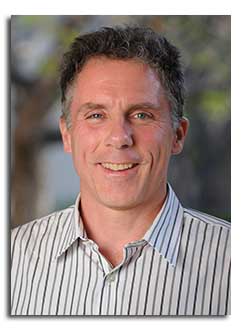
Abstract
The rapid drop of silicon module prices and global growth of photovoltaics has motivated new scientific research frontiers for solar energy such as i) increasing the energy harvest of silicon photovoltaics, ii) beyond-Si (η > 30%) photovoltaics and iii) artificial photosynthesis to create energy-dense chemical fuels from sunlight. I will discuss several photonic designs, which can enable progress in each of these areas. Photonic design approaches such as i) effectively-transparent front contacts and bifacial module illumination can increase both the power and efficiency obtained from silicon modules. ii) Highly luminescent semiconductors have opened new directions for spectrum-splitting high efficiency photovoltaics; I will describe both ray-optical spectrum-splitting architectures as well as luminescent solar concentrator flat panel module that enables 30-100x concentration. Tandem multijunction cells coupled to water oxidation and reduction catalysts have enabled approaches to stable, >10% water splitting efficiency for solar-to-hydrogen generation. I will summarize progress for >15% solar-to-hydrogen efficiency devices and the outlook for >20% STH. Present work and future directions in artificial photosynthesis for carbon dioxide reduction will also be discussed.
Click here to see all available video seminars.
Click here to go to the SPREE HOMEPAGE.
Brief Bio
Harry Atwater is the Howard Hughes Professor of Applied Physics and Materials Science at the California Institute of Technology. Atwater’s scientific interests have two themes: light-matter interactions in nanophotonic materials and structures as well as solar energy conversion. Atwater is an early pioneer in nanophotonics and plasmonics; he gave the name to the field of plasmonics in 2001. He has created new high efficiency solar cell designs, and has developed principles for light management in solar cells. Professor Atwater currently serves as Director of the DOE Joint Center for Artificial Photosynthesis.
Harry Atwater Member of US National Academy of Engineering, and is also a Fellow of the American Physical Society, the Materials Research Society, and the National Academy of Inventors. Atwate is the co-founder of Alta Devices, a solar photovoltaics company in Santa Clara, CA, that holds the current world records for 1 Sun single and dual junction solar cell efficiency and that is currently transitioning GaAs photovoltaics technology to manufacturing and large-scale production. He is the founding Editor in Chief for the journal ACS Photonics, and is Associate Editor for the IEEE Journal of Photovoltaics. In 2006 he founded the Gordon Research Conference on Plasmonics, which he served as chair in 2008.
He has authored or co-authored more than 400 publications cited in aggregate > 50,000 times, and his group’s advances in the solar energy and plasmonics field have been reported in Scientific American, Science, Nature Materials, Nature Photonics and Advanced Materials.
Atwater has been honored by awards, including: (2016) APS David Adler Lectureship for Advances in Materials Physics, (2014) Julius Springer Prize in Applied Physics, (2014-2017) ISI Highly Cited Researcher, (2013) Fellowship from the Royal Netherlands Academy of Arts and Sciences, (2012) ENI Prize for Renewable and Nonconventional Energy, SPIE Green Photonics Award (2012), MRS Kavli Lecturer in Nanoscience (2010), the Popular Mechanics Breakthrough Award (2010). He received the Joop Los Fellowship from the Dutch Society for Fundamental Research on Matter (2005), the A.T.&T. Foundation Award (1990). He won the NSF Presidential Young Investigator Award (1989) and the IBM Faculty Development Award in 1989-1990.
Professor Atwater has worked extensively as a consultant for industry and government, and has actively served the materials community, including Material Research Society Meeting Chair in 1997, AVS Electronic Materials and Processing Division Chair in 1999, Materials Research Society President in 2000, and Board of Trustees of the Gordon Research Conferences. He also teaches graduate level Applied Physics classes at Caltech in optoelectronics, solid-state physics and device physics.
Professor Atwater received his B. S., M. S. and Ph.D. degrees from the Massachusetts Institute of Technology respectively in 1981, 1983 and 1987. He held the IBM Postdoctoral Fellowship at Harvard University from 1987-88, and has been a member of the Caltech faculty since 1988.
